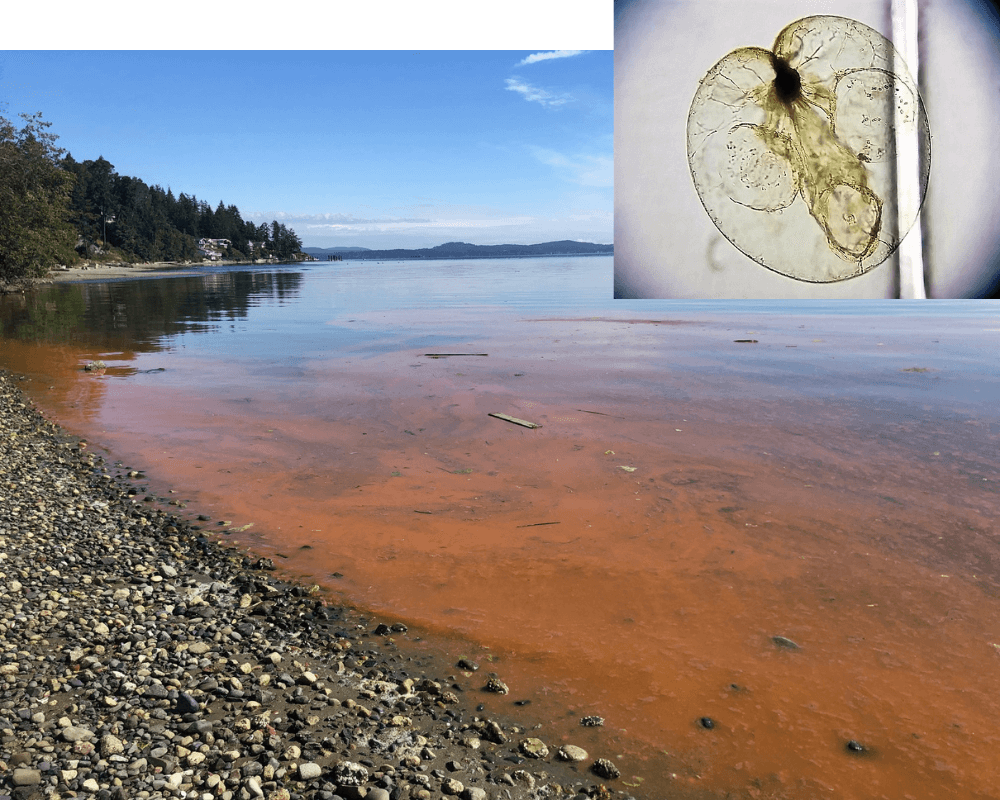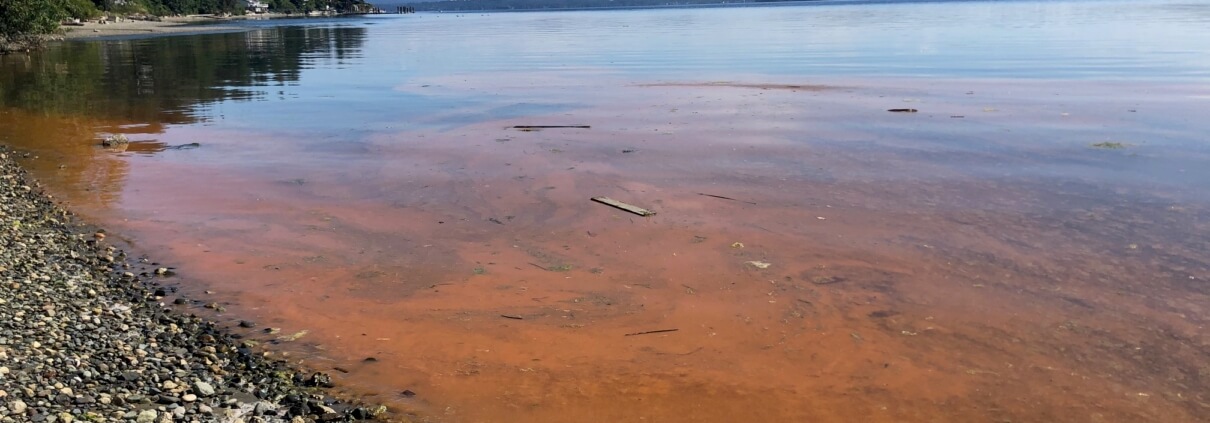New study indicates that some algae blooms may adversely affect wild salmon
Just in time for World Algae Day Oct. 12, Pacific Salmon Foundation researchers publish a first-of-its-kind study that helps shed light on algae, the foundation of the marine food web.
Tiny algae comprise the building blocks of the food web of one of the most productive marine areas in the world, the Strait of Georgia British Columbia. Most marine life — including Pacific salmon — ultimately rely on algae to survive.
Though often unnoticed, algae occasionally make waves when they form unusually dense and colourful blooms ranging from bright orange to turquoise. Although quite the sight to see, they are often harmless. However, some algae cause profound effects on fish and shellfish even when the water seems clear.
A recent publication in the journal Harmful Algae, based on a four-year study conducted in Cowichan Bay, B.C., highlights potential links between the type of and amount of specific harmful algae, and the health of juvenile salmon.
For example, most juvenile Chinook salmon studied stopped feeding during two types of dense algae blooms — Skeletonema and Pseudo-nitzschia. Salmon gills showed damage following high levels of harmful Chaetoceros. And salmon livers showed signs of adverse changes during a Octactis speculum bloom.

Net covered in Pseudo-nitzschia bloom during a juvenile salmon study in Cowichan Bay. This type of algae caused most juvenile Chinook salmon to stop feeding. Top left: Pseudo-nitzschia cells under a microscope.

A Noctiluca scintillans bloom. These algae commonly bloom in B.C. People often call it ‘red tide’ and believe it cause paralytic shellfish poisoning (PSP), however it DOES NOT produce toxins responsible for PSP. It is bioluminescent and produces a beautiful sparkling sea affect at night. Top right: A Noctiluca scintillans cell under a microscope.
This study is the first of its kind to be conducted with wild Pacific salmon. However, as this research stems from a limited number of samples, further study is required to fully evaluate the potential role of harmful algae as a stressor to wild fish in a coastal environment.
“We look forward to further investigating harmful algae and their effects on salmon,” says lead author of the publication, Svetlana Esenkulova, Pacific Salmon Foundation biologist. “Climate change is being tied to an increasing number of harmful algal blooms so it is essential to understand how exactly these algae affect marine ecosystems. There is much to be learned.”
Learn more about harmful algae and salmon:



